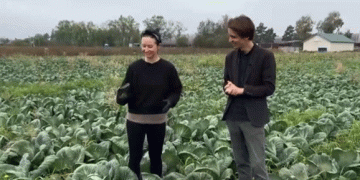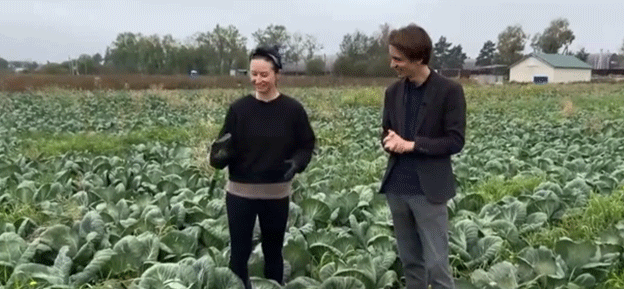On this traditional “Fedorin Day,” farmers in Leningrad Oblast gather to chop cabbage, a practice embedded in Russian cultural heritage. The fall harvest season, especially for mid-to-late varieties like white cabbage, is a time of community and celebration. Historically, gatherings known as “kapustniki” would bring people together to prepare cabbage for sauerkraut, a practice still observed today.
At the “Zhili-Rastili” farm, field workers use axes to harvest large heads of white cabbage. The process, though humorous in its portrayal—especially when neighbors witness cabbage being chopped at home—has a serious nutritional purpose. White cabbage is rich in vitamins C and K, and its direct-from-farm freshness offers superior taste and nutrient retention compared to grocery store options that undergo extended storage and transport. Fresh cabbage from the field minimizes exposure to external odors and preserves a crisp texture, making it ideal for home fermentation.
Additionally, the farm grows colorful cauliflower and nutrient-packed broccoli. While traditional cauliflower is commonly white, there are also varieties with a lemon hue. Broccoli, although less appreciated for its taste, provides essential vitamins and antioxidants. When sampled fresh, its crisp and subtly sweet flavor can surprise even the most skeptical eater. Brussels sprouts, a unique crop harvested from tall stalks, add diversity to the farm’s offerings. These sprouts can be enjoyed grilled or added to a variety of dishes, delivering a concentrated dose of fiber and folate.
Cabbage remains a staple of Russian diets, with varieties suited for fresh consumption, fermentation, or freezing. As farmers in Leningrad Oblast demonstrate, each type of cabbage plays a role in a well-rounded diet, ensuring both flavor and health benefits.
The autumn cabbage harvest in Leningrad Oblast reflects a rich agricultural tradition paired with the promise of nutritious, versatile vegetables. Whether enjoyed raw, fermented, or cooked, cabbage varieties like white cabbage, broccoli, and Brussels sprouts highlight the ingenuity of local farmers and the enduring value of this humble crop.































